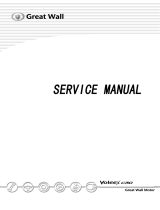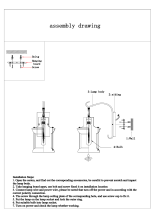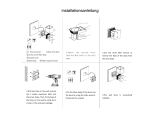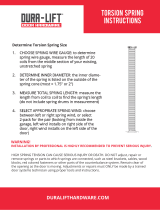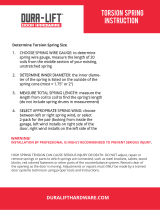Page is loading ...


Preface
With the increase of automobile demand in China, our automobile industry also experiences a rapid
development. The trucks including SUV, manufactured by Great Wall Motor Co., Ltd, which are sold all over
China, are in the leading place in terms of their sales volume, in order to satisfy the demands of various maintain-
ing staff, technicians and managing staff of Changcheng Co., Ltd, we compile this maintenance manual accord-
ing to the latest technological data. This manual covers six vehicle models including Deer, Safe, Sailor, Sing, So
Cool and Pegasus, its main content includes:
Part I is general introduction, which introduces the application index of this manual.
Part II introduces the chassis system, which mainly includes the technologies of dismantle, inspection,
adjustment, repairing, assembly and mount of the clutch, gear box, transfer box, drive shaft, suspension system
and automobile axle, braking system and steering system, etc. each operation approach is illustrated with figure,
which not only presents the maintenance procedure, but also clearly describes the technical requirements and
application limit.
Part III introduces the electric system and air-conditioning system of the automobile body, which mainly
covers such items as the location and content of protective box, power supply system, starting system, lighting
system, combination instrument, backup radar system, wiping and washing system, center control locking and
power window system, acoustical equipment system, full wire harness and air-conditioning system, etc. Electric-
ity diagrams for those electric systems are given in this manual so as to facilitate the maintaining technicians to
find out the problem easily and quickly.
Part IV introduces the external and internal body decoration, which mainly covers the dismantling, inspect-
ing and assembling requirements of the engine cover, front and rear doors, adhesive strip of body collision
avoidance, wheel shield, wrapping angle of wheel-shield and exterior trim panel, front and rear windshields,
side-window glass, rear-door glass, rear platform of cargo compartment, rear door, instrument panel, safety belt,
seat, tail-fin, luggage rack, and reserve tire bracket etc. The dimensions of vehicle body and frame are also given
to maintaining staff for reference during their repairing.
During the narrations of each part, items such as troubleshooting, maintenance notice, maintenance data
and application limit, fastening torques of bolts and nuts for special purpose, SST, SSM and lubricant materials
and so on are also introduced. Various maintenance data are briefed in attachment for reference.
Altogether, this manual is comprehensive in content, visual in illustration, clarifying in requirement and
plain in language. It can be referred by the maintaining staff, technicians and professional managing staff.
Even though we try our best to compile this manual in a strict earnest manner, we cannot guarantee that all
contents in this manual are correct. Therefore, users shall not put forward any claim with Great Wall Company
according to this manual; we are not in the position to hold the responsibility for the loss caused by usage of this
manual. Due to our limited knowledge, it is unavoidable to find error in this manual, any criticism and correction
from you is welcomed.
The final explanation power for this manual is subject to Great Wall Motor Co., Ltd
Compiler
May 2006


Service manual for
chassis and body
General IN
Clutch CL
Gear box MT
Transfer box TF
Drive shaft PR
Suspension system and automobile axle SA
Braking system BR
Steering system SR
Body electric system BE
Air-conditioning system AC
Vehicle body BO
Maintenance and Up-keeping A
Special Tool B

IN-1
Page
How to use this manual ................................................. IN-2
Instruction for overall repairing ...................................... IN-4
Body lifting height and support position ........................ IN-5
fk
Introduction

IN-2
How to use this manual
In order to help you to look in this manual, we marked the chapter
name and main theme at the top of each page.
In order to introduce the repairing items to you, we make the index on
the first page of each chapter, and notices need to be taken during all
repairing operation are also given in the related chapter.
Please read these notices carefully before the repairing work.
The troubleshooting form for each system will help you to diagnose
the system trouble and its cause.
We furnish with the repairing approaches for each possible cause in
the repairing approach column, which will help you to acquire the
solution in a short time.
Introduction How to Use This Manual
Repairing approach
Most repairing operation can begin with referring to these illustrations.
These illustrations can help you identify the parts and their coordina-
tion situation
Example
snapping ring
front minor half-shaft
front speed reducer
and differential
oil seal-front semi-axle
front long
semi-axis
snapping ring
88
N*m
specified torque
Parts that cannot be reused after being used

IN-3
Introduction How to Use This Manual
Introductionóhow to use this manual
The repairing approaches are described step by step:
The illustrations show you what to do and at which position.
The theme of repairing operation tell you what you need to do.
The detailed instruction show you how to accomplish the repairing and
introduce to you other related affairs, such as specification, warning etc.
Example:
Check and adjust the flange bounce
(a) Attach the dial indicator seat to the reducer housing, and touch the
flange face with the measuring head of dial indicator, run the flange
and observe the pendular range of the indicator carefully.
Full bounce tolerance of face : 0.10mm
Illustration:
what to do and at which position
Specification
This formula can help the experienced technicians find out the failure
causes in short time. Overhauling staff can browse the operation theme
and refer to the detailed description thereunder where necessary; impor-
tant specifications and warnings are written out in boldface.
Specification
The corresponding specifications are given in boldface in each repairing
approach of this manual, which allows the overhauling staff to check the
specification while keeping on repairing work.
Warning, Notice and Remark
Warning written out in boldface means there is possibility of self-
injury or harm to others.
Notice written out in boldface means there is possibility of damage
to parts under repairing.
Remarks singled out independently, but not in boldface, serve as
supplementary descriptions to help you accomplish the work more
efficiently.
Vehicle Code
There are six vehicle models in this manual, the model codes are as follows:
Deer modelDr
Sailor modelSL
SO COOL modelSK
Safe modelSF
Sing modelSY
PEGASUS modelSJ
Abbreviation used in this manual
A/Cair-conditioner
ECUelectronic controller unit
SSTspecial service tool
2WDtwo-wheel drive
4WDfour-wheel drive
PMãã
Topic:what to do ?
Detailed introductionz;How to do?

IN-4
Overall Repairing Description
1. Keep the vehicle clean and prevent it from
damage with guard plate, seat and floor cover
cloth.
2. Put down the dismantled parts in order during
the dismantle process so as to facilitate the re-
assembly
3. Observe the following items:
a) Disconnect the cable cathode from the
accumulator terminal before the electric
operation;.
b) Disconnect the cable from the cathode
connected to the vehicle body when check-
ing or repairing the accumulator where
necessary.
c) In order to avoid the damage of terminal
post of accumulator, loose the bolts first,
then pull up the cable vertically when
dismantling, dont wring it or prize it.
d) Clean the terminal posts of the accumula-
tor with dishcloth, and do not scrape them
with file or other similar tools to avoid
damage.
e) Mount the cable terminal on the post with loosened nut, then
fasten the nut. donít tap the terminal onto the post with
hammer.
f) Be sure to check whether the cover of positive terminal (+) is
well located or not.
4. Check all hoses and wire plugs to verify whether they are
connected solidly and correctly.
5. Parts that cannot be reused after being used.
a) The following parts should be changed with new one regularly:
split pin, sealing washer, O-ring and oil seal, etc.
b) parts that cannot be reused after being used is marked with
in the element figure.
6. Pre-coated parts
The pre-coated parts including the bolt and nut are coated with
locking seal glue in factory.
a) In case the pre-coated parts are moved due to its fastening,
loosening or other causes, they must be coated again with the
specified seal glue.
b) Coating procedure of pre-coated parts
1) Clear away the former seal glue from the screw thread of
the said parts.
2) Dry the parts with compressed air.
3) Coat the screw thread of the parts with the specified
locking seal glue.
c) The pre-coated parts are marked with the in element
figure.
7. When necessary, sealing agent or sealing ring to prevent the
leakage.
8. Each specification shall be followed strictly. And the torque
spanners should be used.
9. Determine the necessity of using the special service tools (SST)
or special service materials (SSM) according to the real situation.
SST and SSM must be used where necessary and the repairing
should be in accordance with the repairing approach. SST list
and SSM list are attached to this manual.
10. Be sure to check whether the rated current of the new fuse is
correct when changing the fuse. The fuse rated current should
not larger than that of securing fitting and the fuse of smaller
rated current must not be used.
11. Be careful to hang or support the vehicle on the suitable place
when propping up or raising it.
a) In case prop up the vehicle at the front or back part, the wheels
must be blocked to guarantee the safety work.
Introduction Overall Repairing Rescription
tighten seal glue

IN-5
Body lifting height and supporting position
wrong correct
Introduction Body Lifting Height and Supporting Position
Jack lifting position
...........................................................................................................
Front......the front the beam center
Rear.....rear differential
Supporting position
safety bracket .............................................................................................
front
b) The raised vehicle must be supported with the bracket; it is
dangerous to conduct the repairing work on the vehicle propped
up with one jack, even though such repairing can be finished in
short time.
12. The following items shall be taken notice to avoid the parts damage:
a) Do not open the covers of ECU and various computers where not
necessary absolutely. (if the IC terminal is touched, it be leaded
into static damage) .
b) Pull the hose at its ends when dismantling it, do not pull it at the
center section.
c) Pull the wire joint instead of the wire when pulling the joint
away.
d) Take notice to avoid of the drop of electric parts such as the
sensors or repeaters. In case those parts drop to the hard ground,
they must be changed instead of being reused.
e) Do not use the striking spanner to dismantle or mount the
thermostatic switch or thermostatic sensor.
f) Plug the needles of the multi-meter into the wire connector
carefully when checking its conductance and do not bend the
terminals.
g) Do not sheath the hose of the vacuum gauge into the very large
connector when using the gauge, instead, the stage joint shall be
used because once the hose expands, it is possible to lead into
the leakage.

CL-1
CL
Page
Troubleshooting .......................................................... CL-2
Inspection and adjustment of clutch pedal ................... CL-3
Air exhausting of clutch ................................................ CL-3
Clutch master cylinder................................................ CL-4
Clutch wheel-brake cylinder ......................................... CL-6
Clutch cluster ............................................................... CL-7
Clutch

CL-2
Clutch Troubleshooting
Troubleshooting
Trouble Causes Repairing approaches
Difficulty in gearshift
or non-gearshift
Overlarge free stroke of clutch pedal
There is air in clutch pipe
Failure of clutch brake-wheel cylinder
Failure of clutch master cylinder
Overlarge clutch pendulum difference due to incorrect mounting, the
friction liner is stained with oil or is breaking
There is dirty or adhesive materials on spline of input shaft or clutch rib
Failure of clutch pressure plate
Adjust the free stroke of pedal
Exhaust the air in clutch pipe
Change the clutch brake-wheel cylinder
Change the master cylinder
Check the clutch rib
Repair according to requirement
Change the clutch pressure plate
Disengagement of gear
box or clutch slip
Abrasion of clutch guide shaft
Insufficient free stroke of clutch pedal
The friction liner of clutch rib is stained with oil or is worn
Failure of clutch pressure plate
Seize up of separation fork
Change the guide shaft
Adjust the free stroke of pedal
Check the clutch rib
Change the clutch pressure plate
Check the separation fork
Clutch seize-up or
shaking
The friction liner of clutch rib is stained with oil or is worn
Failure of clutch pressure plate
Looseness of engine seat
Check the clutch rib
Change the clutch pressure plate
Repair according to requirement
Looseness of clutch
pedal
There is air in clutch pipe
Failure of clutch brake-wheel cylinder
Failure of clutch master cylinder
Exhaust the air in clutch pipe
Change the clutch brake-wheel cylinder
Change the master cylinder
Over-loud clutch noise
Seize up of separation fork;
Abrasion or stained spot of separation bearing
Abrasion of guide bearing
Parts looseness in clutch pressure plate
Repair according to requirement
Change the separation bearing
Change the guide bearing
Change the clutch pressure plate

CL-3
Clutch Inspection and Adjustment of Clutch Pedal, Air Exhausting of Clutch
Air-exhausting of clutch
Remark: in case operation needs to be conducted for the clutch
system or if there is air in clutch, exhaust the air.
Notice : Do not stain the painted surface with brake liquid,
if any brake liquid is left, wash it away immediately.
1.
Fill the brake liquid into the oil cup of clutch master cylinder;
The oil cup of master cylinder shall often be checked and, if
necessary, added with brake liquid.
2.
Connect the ethene resin pipe to the air-exhausting valve.
Insert the other end of the pipe into the container, half of which
is filled with brake liquid.
3. Air-exhausting in clutch system
a) Move the clutch pedal up and down slowly for several times.
b) Loosen the air-exhausting valve when pressing the pedal
increasingly until there is brake liquid overflowing, then
tighten the air-exhausting valve.
c)
Repeat this operation until the bubble in brake liquid disappears.
Inspection on and adjustment
of clutch pedal
1. Check whether the pedal height is correct
Pedal height that begins from front wall board:
Dr SF(165 5)mm
SL SK SY SJ(190-200)mm
2. Adjust the pedal height where necessary
Loosen the locking nut and screw off the adjusting bolts until
the pedal height is correct. Then screw up the locking nut.
Pedal free stroke
3. Check whether the pedal free stroke is correct
Press the pedal lightly until the resistance generated by clutch
occurs.
pedal free stroke: (5-15)mm
4. Adjust the pedal free stroke where necessary;
a) Loosen the locking nut and rotate the push-rod until the
stroke is correct;
b) Screw up the locking nuts;
c) Check the pedal height after the adjustment of pedal free
stroke.
adjusting spot in
pedal height
pedal height
pedal free stroke

CL-4
Clutch Clutch Master Cylinder
Clutch Master Cylinder
Element drawing
SST
Disassembly of master cylinder
1. Tear down the pin of push-rod
2. Tear down the clutch pipe
Disconnect the jointed pipe nuts with SST
3. Tear down the master cylinder
a) Tear down the fixing nuts;
b) Pull out the master cylinder.
spring pin with groove
clutch master
cylinder
18 2
19 1
ring pipe
oil cup of clutch master cylinder
spring
piston
U-clamp
pin
open pin of nut
open ring
push-rod
gasket
dust cover
N*m
specified torque
Parts that cannot be reused after using.
nut

CL-5
Clutch Clutch Master Cylinder
Disassembly of oil cup of master cylinder
1. Tear down the oil cup
a) Use the pinch and hammer to tap out the spring pin with
groove;
b) Tear down the oil cup and ring pipe.
Assembly of master cylinder
1. Mount the oil cup
a) Mount the oil cup and the new ring pipe.
b) Use the pinch and hammer to tap in the spring pin with
groove.
Mount of master cylinder
1. Mount the master cylinder
Mount the fixing nuts and screw them up.
2. Connect the clutch pipes;
Connect the clutch pipes with SST
3. Connect the push-rod and mount the pin;
Encase the pin of push-rod with clamping pliers.
4. Exhaust the air in clutch system and adjust the clutch
pedal.

CL-6
Clutch Clutch Brake-Wheel Cylinder
Clutch brake-wheel cylinder
Element drawing
clutch brake-wheel cylinder
spring
piston
dust cover
push-rod
air-exhausting plug
N*m specified torque
Disassembly of brake-wheel cylinder
1. Tear down the clutch pipeline.
Remove the pipeline with SST
2. Tear down the two bolts to take down the clutch
brake-wheel cylinder
mount of brake-wheel cylinder
1. Mount the brake-wheel cylinder with two bolts;
2. Connect the clutch pipeline;
Connect the pipeline with SST;
3. Exhaust the air in clutch system.
18 2
19 1

CL-7
Clutch Clutch Cluster
Clutch cluster
Element drawing
flywheel
clutch rib
clutch pressure plate
separation
bearing
clamp separation fork
dust cover
30
specified torque
N*m
Disassembly of clutch cluster
1. Tear down the gear box;
Remark: do not leave the gear oil in drying
2. Tear down the clutch pressure plate and the clutch rib
a) Make aligning marks on the clutch pressure plate and the
flywheel.
b) Loosen the fixing bolts gradually until the spring tension
is released;
c) Tear down the fixing bolts to pull out the clutch pressure
plate and clutch rib.
3. Tear down the bearing and separation fork from the gear
box;
a) Tear down the clamp to pull out the bearing;
b) Tear down the separation fork and dust cover.

CL-8
Clutch Clutch Cluster
Inspection on clutch parts
1. Check whether there is abrasion or damage of clutch rib;
Measure the depth of the rivet head with calipers.
Min depth of rivet head: 0.3mm
If the depth of rivet head exceeds the limit value, change the
clutch rib.
2. Check the radial pendulum difference of the clutch
Check the radial pendulum difference of the clutch rib with
multi-meter.
Max radial pendulum difference: 0.8mm
If the radial pendulum difference exceeds the max value,
change the clutch rib.
3. measure the rdial pendulum difference of the flywheel;
Check the radial pendulum difference of flywheel with multi-
meter;
Max radial pendulum difference: 0.2mm
If the radial pendulum difference exceeds the max value,
change the flywheel.
4. Check the guide bearing
Exert the force in radial direction to rotate the bearing by hand.
If the guide bearing doesnt run or if there is great resistance,
change the guide bearing.
Remark: as this bearing is lubricated permanently, it needs not
to be cleaned or lubricated.
5. Change the guide bearing where necessary.
a) Tear down the guide bearing with SST;
SST

CL-9
Clutch Clutch cluster
b) Mount the guide bearing with SST.
Remark: the bearing shall be verified in good running after it
is encased in the flywheel hub.
2. Check whether there is abrasion on the diaphragm spring.
Check the abrasion depth and width of diaphragm spring with
calipers.
Limit value: Max depth: 0.6mm
Max width: 5mm
If the abrasion depth or width of the diaphragm spring exceeds
the limit value, change the diaphragm spring .
3. Check the separation bearing
Exert force in radial direction by hand to rotate the bearing.
If it cannot be rotated or if the resistance is too large, change
the separation bearing.
Remark:
Remark: as this bearing is lubricated permanently, it doesnít
need to be cleaned or lubricated.
Mount of clutch cluster
1. Mount the clutch rib on flywheel;
Mount the clutch rib on flywheel with SST.
2. Mount the clutch pressure plate
a) Align the marks on clutch pressure plate and that on flywheel;
b) Screw up the bolts in even manner around the clutch pressure
plate until pressure plate and the flywheel contact closely,
then tighten the bolts.
Tightening moment: 30 Nm
Remark: tighten the uppermost bolt of the three that is near to
the locating pin.
SST
flywheel side
SST
alignment
mark

CL-10
Clutch Clutch Cluster
3. Check the alignment of the diaphragm spring end.
Check the alignment of diaphragm spring end with SST.
Max dislocation: 0.5mm
if the difference is more than the specified value, adjust the
alignment of diaphragm spring end with SST.
4. Coat the lithium base grease;
Coat the lithium base grease on the following parts:
Contact spot of separation fork and bearing
Contact spot of separation fork and push-rod;
Support spots of separation fork
Spline of clutch rib
5. Encase the dust cover, separation fork, separation bearing
seat and bearing into the gearbox;
6. Mount the gearbox.
SST

MT-1
Gear box
page
Notice ........................................................................... MT-2
Troubleshooting ........................................................... MT-3
Dismantle of Gear Box ................................................. MT-4
Mount of Gear Box ....................................................... MT-7
Disassembly of Gear Box ............................................. MT-10
Input Shaft Assembly ................................................... MT-18
Element Drawing ...................................................... MT-18
Inspection on Synchronizing Ring ............................ MT-18
Bearing Change ....................................................... MT-18
Output Shaft Assembly................................................. MT-20
Element Drawing ...................................................... MT-20
Disassembly of Output Shaft Assembly.................... MT-21
Inspection on Output Shaft Assembly ...................... MT-23
assembly of Output Shaft Assembly ......................... MT-25
Countershaft Assembly And Reverse Idle Gear
Assembly ...................................................................... MT-29
Element Drawing ...................................................... MT-29
Disassembly Inspection and Assembly of
Countershaft Assembly ............................................. MT-29
Assembly of Reverse Gear ...................................... MT-31
Rear Housing assembly ............................................... MT-33
Element Drawing ...................................................... MT-33
Change of Oil Seal ................................................... MT-33
Change of Shaft Bush .............................................. MT-33
Inspection on and change of Position-Limit
Mechanism Cluster ................................................... MT-34
Front Cover of Bearing ................................................. MT-36
Element Drawing ...................................................... MT-36
Change of Oil Seal ................................................... MT-36
Assembly of Gear Box ................................................. MT-37
MT
/
